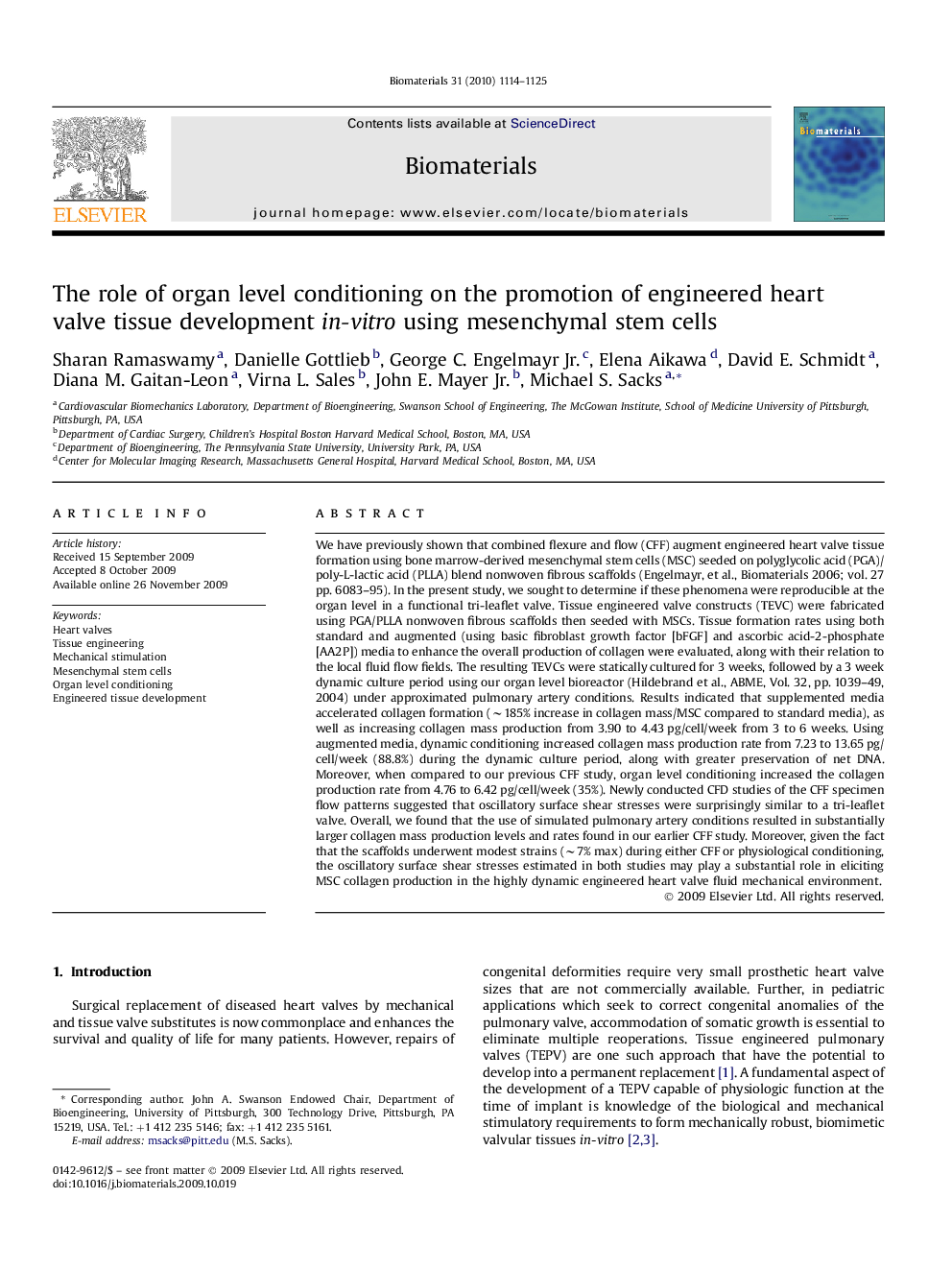| کد مقاله | کد نشریه | سال انتشار | مقاله انگلیسی | نسخه تمام متن |
|---|---|---|---|---|
| 9814 | 648 | 2010 | 12 صفحه PDF | دانلود رایگان |

We have previously shown that combined flexure and flow (CFF) augment engineered heart valve tissue formation using bone marrow-derived mesenchymal stem cells (MSC) seeded on polyglycolic acid (PGA)/poly-L-lactic acid (PLLA) blend nonwoven fibrous scaffolds (Engelmayr, et al., Biomaterials 2006; vol. 27 pp. 6083–95). In the present study, we sought to determine if these phenomena were reproducible at the organ level in a functional tri-leaflet valve. Tissue engineered valve constructs (TEVC) were fabricated using PGA/PLLA nonwoven fibrous scaffolds then seeded with MSCs. Tissue formation rates using both standard and augmented (using basic fibroblast growth factor [bFGF] and ascorbic acid-2-phosphate [AA2P]) media to enhance the overall production of collagen were evaluated, along with their relation to the local fluid flow fields. The resulting TEVCs were statically cultured for 3 weeks, followed by a 3 week dynamic culture period using our organ level bioreactor (Hildebrand et al., ABME, Vol. 32, pp. 1039–49, 2004) under approximated pulmonary artery conditions. Results indicated that supplemented media accelerated collagen formation (∼185% increase in collagen mass/MSC compared to standard media), as well as increasing collagen mass production from 3.90 to 4.43 pg/cell/week from 3 to 6 weeks. Using augmented media, dynamic conditioning increased collagen mass production rate from 7.23 to 13.65 pg/cell/week (88.8%) during the dynamic culture period, along with greater preservation of net DNA. Moreover, when compared to our previous CFF study, organ level conditioning increased the collagen production rate from 4.76 to 6.42 pg/cell/week (35%). Newly conducted CFD studies of the CFF specimen flow patterns suggested that oscillatory surface shear stresses were surprisingly similar to a tri-leaflet valve. Overall, we found that the use of simulated pulmonary artery conditions resulted in substantially larger collagen mass production levels and rates found in our earlier CFF study. Moreover, given the fact that the scaffolds underwent modest strains (∼7% max) during either CFF or physiological conditioning, the oscillatory surface shear stresses estimated in both studies may play a substantial role in eliciting MSC collagen production in the highly dynamic engineered heart valve fluid mechanical environment.
Journal: Biomaterials - Volume 31, Issue 6, February 2010, Pages 1114–1125